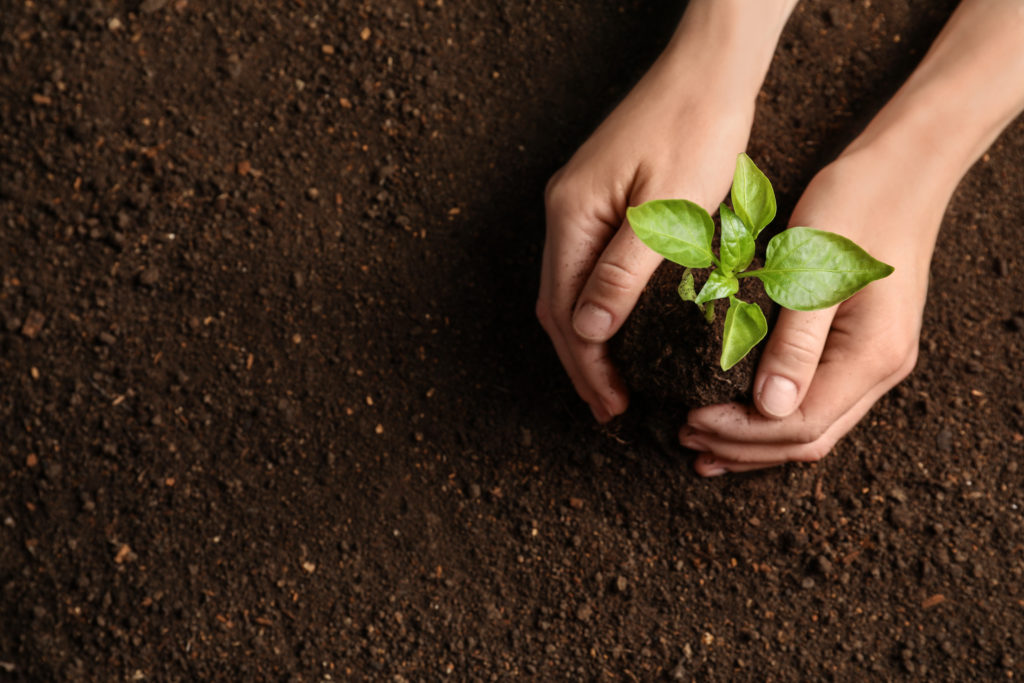
Do you remember being a young kid and wanting to help your parents fix or build something for the first time? The world of tools was both fascinating and intimidating. You may have heard a request like, “Grab me that crescent wrench!” only to lay eyes on a vast assortment of steel utensils that all had seemed to look like they may have been able to serve the application of tightening a nut. In time, you probably learned that there were a variety of wrenches that each best served a specific function for a specific application. While a crescent wrench may work in a situation where you actually want a socket wrench, you’ll get much better results when trying to use the latter. It’s actually the same with soils!
When I obtained my most recent home, it came with a vast garden plot in addition to large swaths of overgrowth buckthorn which I systematically cleared out and attempted to replant with grass. I naively thought that dirt was dirt, and you planted things in it and watched them grow, as long as you provided them with sunlight and water. I’d hear people talk about the “sandy soil” and the chemical makeup of the ground that would prevent me from having things thrive. I shrugged it off, only to spend lots of money on things that just wouldn’t grow well. When I started my role at Plaisted Companies, I began to truly have my eyes opened to what materials are essential to have in soils that make growth optimal.
I realized that Greenhouses and Nurseries like soil that requires less watering to help reduce labor costs. How is that obtained? A specific mixture of peat, composted pine bark, yard compost, perlite, lime and slow release fertilizer is ideal. Peat holds several times its weight in moisture and releases it to roots as necessary. Pine bark has a low ph, which is beneficial as it uses less nitrogen to decompose, so less fertilizer is needed to keep plants healthy. Yard compost is great for water retention. Perlite is porous so it absorbs water and improves drainage. Lime helps improve the ph of acidic soil. But it doesn’t just stop there. If you are growing something larger like a tree or shrub and starting it in a container, there is a different mix that is better suited. A “soilless” blend of composted pine bark, peat and sand is actually perfect due to its lighter weight and ability for water to get to the root system faster.
What about homeowners who want those prize winning tomatoes or cucumbers? A mixture of soil, enhanced with peat, yard compost and sand is what works best. The porosity of that mix helps plants retain nutrients and increase growth. The coarse sand improves drainage for accelerated germination. Perhaps you are starting with a raised garden bed and you get really tired of fighting with constant weeding. There are soilless mixtures that fit the bill perfectly.
I was floored the first time I put a base layer of black dirt down when trying to grow grass in an area where I cleared out a small wooded area, vs not using black dirt. Black dirt works well in heavy clay or sandy soils because it improves drainage and reduces root disease. It retains water better to promote nutrient retention. My grass grew 3-4 times as fast and thick as my previous efforts.
It’s not enough just to have the right elements included in a soil mixture. The mixture has to be precise. It’s not unlike that family recipe that has been perfected over years of trial and error. Too much sugar or too little salt, and it just doesn’t quite taste perfect. Unlike the unscientific methods in those recipes though of a “dash” or a “pinch”, it’s important to get a precise percentage of “ingredients” into your soil that can be replicated each and every time. How exactly do you do that though when you are dealing with mixing massive volumes? It’s not like you can put exactly a ½ cup of Organic Compost into several cubic yards of dirt to get the right mixture each time. Plaisted Companies actually does it with a system they developed called an Accublender, that takes the kind of precise measurements you might see in cooking and translates it to production on a massive scale!
So next time you are preparing to exercise your green thumb, remember that dirt isn’t just dirt. You might want to go to your toolbelt and find that specific soil that is the perfect marriage for your growing application!


